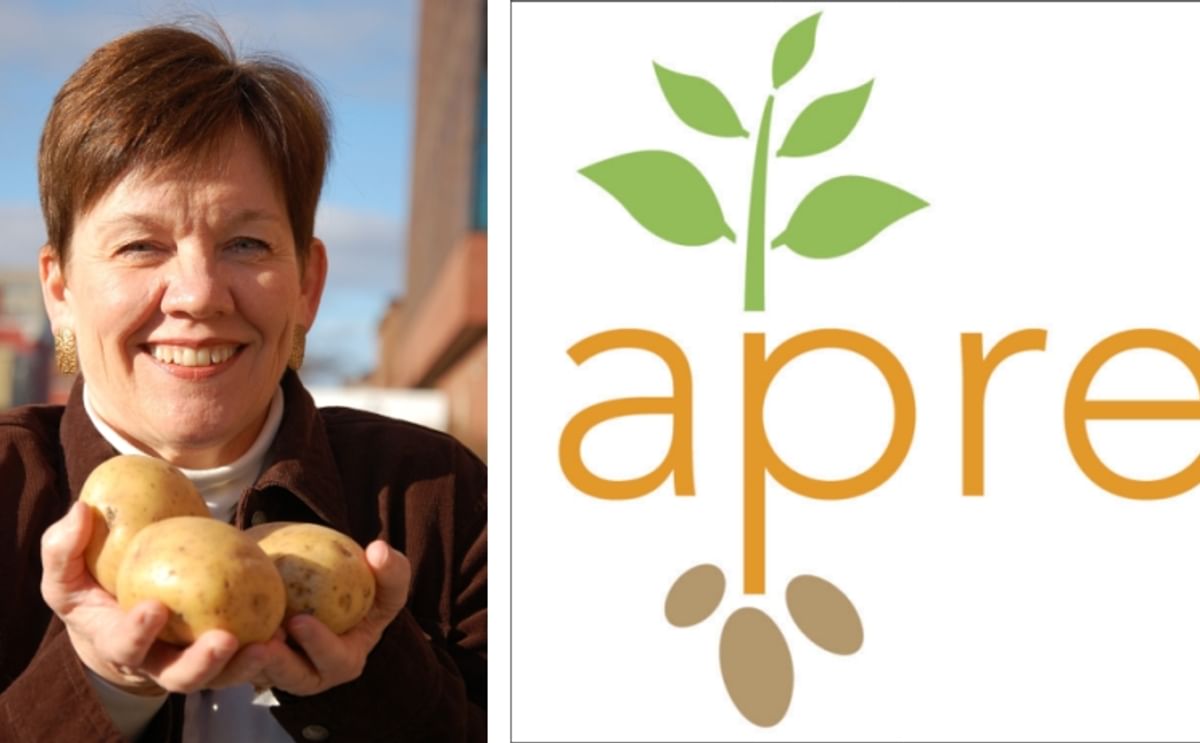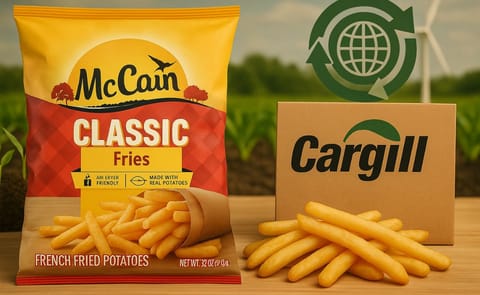Dr. Maureen Storey, Chief Executive Officer for the science-based Alliance for Potato Research and Education (APRE) presented a new analysis showing that calorie intake from white potatoes is surprisingly modest for adults and school-aged children.
Only 3% of calories in US diet come from potatoes and french fries

Calorie intake from white potatoes is surprisingly modest for adults and school-aged children, according to a new study released today at the Experimental Biology 2012 Annual Meeting.
Dr. Maureen Storey, Chief Executive Officer for the science-based Alliance for Potato Research and Education (APRE) presented the new analysis using data from the Centers for Disease Control and Prevention's National Health and Nutrition Examination Survey (NHANES).
"School-aged children consumed, on average, only three percent or less of calories per day from all types of white potatoes, including baked, boiled, mashed, French fried and other mealtime preparation methods. And children consumed, on average, less than one percent of their daily caloric intake from white potatoes at school,"said Dr. Storey.
"By the same token, adults also consume few calories from white potatoes and as people get older, they consume fewer total calories, as well as fewer calories from white potatoes. For example, adult males 19-30 years consume about 92 calories a day from white potatoes or about 3.3 percent of total calories;males 71+ consume 63 calories a day from white potatoes or about 3.3 percent of total calories consumed, on average. Similarly adult women 19+ years consumed, on average, 52 calories from white potatoes a day, which is a little less than three percent of their total calories.
"A leader in the vegetable category, white potatoes are packed with nutrition, they're affordable, versatile and people of all ages enjoy them in any way they are prepared. According to the 2010 Dietary Guidelines for Americans, intakes of potassium and dietary fiber are low enough in the United States to be a public health concern. Only three percent of the population meets the adequate intake for potassium. The white potato – a nutrient-dense vegetable – is one way to help fill that gap.
For instance, a medium-sized skin-on baked white potato is an excellent source of potassium (26% DV), vitamin C (28% DV), and vitamin B6 (27% DV) and a good source of dietary fiber (15% DV), magnesium (12% DV), and iron (10% DV) based on a 2,000 calorie diet. USDA's MyPlate initiative encourages all Americans to make half their plate fruit and vegetables. The nutrient-dense potato certainly fits on most everyone's plate.
"Government data show that total fruit and vegetable consumption has been declining in the last decade. We need to find more ways to encourage vegetable consumption, including white potatoes."
Dr. Maureen Storey, Chief Executive Officer for the science-based Alliance for Potato Research and Education (APRE) presented the new analysis using data from the Centers for Disease Control and Prevention's National Health and Nutrition Examination Survey (NHANES).
"School-aged children consumed, on average, only three percent or less of calories per day from all types of white potatoes, including baked, boiled, mashed, French fried and other mealtime preparation methods. And children consumed, on average, less than one percent of their daily caloric intake from white potatoes at school,"said Dr. Storey.
"By the same token, adults also consume few calories from white potatoes and as people get older, they consume fewer total calories, as well as fewer calories from white potatoes. For example, adult males 19-30 years consume about 92 calories a day from white potatoes or about 3.3 percent of total calories;males 71+ consume 63 calories a day from white potatoes or about 3.3 percent of total calories consumed, on average. Similarly adult women 19+ years consumed, on average, 52 calories from white potatoes a day, which is a little less than three percent of their total calories.
"A leader in the vegetable category, white potatoes are packed with nutrition, they're affordable, versatile and people of all ages enjoy them in any way they are prepared. According to the 2010 Dietary Guidelines for Americans, intakes of potassium and dietary fiber are low enough in the United States to be a public health concern. Only three percent of the population meets the adequate intake for potassium. The white potato – a nutrient-dense vegetable – is one way to help fill that gap.
For instance, a medium-sized skin-on baked white potato is an excellent source of potassium (26% DV), vitamin C (28% DV), and vitamin B6 (27% DV) and a good source of dietary fiber (15% DV), magnesium (12% DV), and iron (10% DV) based on a 2,000 calorie diet. USDA's MyPlate initiative encourages all Americans to make half their plate fruit and vegetables. The nutrient-dense potato certainly fits on most everyone's plate.
"Government data show that total fruit and vegetable consumption has been declining in the last decade. We need to find more ways to encourage vegetable consumption, including white potatoes."
Like to receive news like this by email? Join and Subscribe!
Get the latest potato industry news straight to your WhatsApp. Join the PotatoPro WhatsApp Community!
Highlighted Company
Sponsored Content
Sponsored Content
Sponsored Content
Sponsored Content








